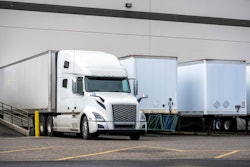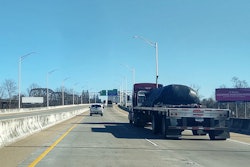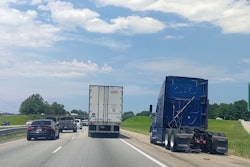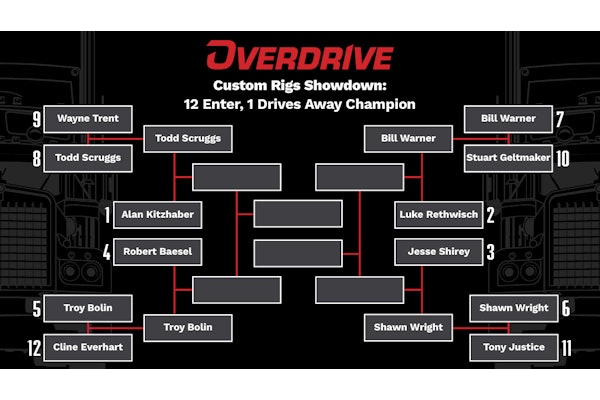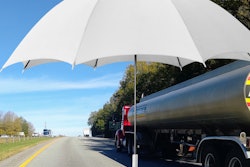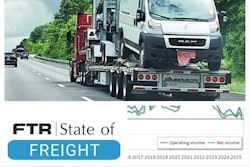As an owner-operator, you enjoy more freedom from supervision than a company driver. As an owner-operator leased to a carrier, to an extent you’re able to set your own hours and take time off when you want. But those freedoms come with a big tradeoff: being financially responsible and self-disciplined.
Why do you want to be an owner-operator? If your answer is to work hard, make more money and have a more rewarding life, you have a good chance at success.
Years 2023 and 2024 haven't exactly been easy ones for owner-operators, with freight rates across all segments down considerably from COVID-era highs that began to back off even as costs were continuing to rise in 2022. 2024 was yet another year of either decline -- or stagnation compared to 2023 -- on the revenue front for many, and fuel costs were up and down throughout the year. Thankfully, variable costs have moderated since 2022, and fuel costs have run consistenly below those big $4/gal. and higher peaks seen after Russia's invasion of Ukraine early that year.
The most successful owner-operators in recent times have been those who did two things: Chalked up more miles and revenue, while also being able to control fuel and the many other costs that come with piloting your own business.

The best of the best are masters at finding ways to do both (maximize revenue and minimize costs) without sacrificing safety, or one at the expense of the other.
If you’re just starting out and reading the Partners in Busines start-to-finish playbook for an owner-operator business, you’re doing something right. Do the hard work of learning as much as you can to develop the business acumen that will serve you through your career.
Ownership risks and rewards
There is more than one way to be a business owner in trucking. As the degree of independence increases, so do the potential risks and rewards.
Lease-purchase operator. You have signed a lease or a lease-purchase agreement to get your truck through a carrier or a third-party leasing company.
Pros: Easiest way to get into business with little or no down payment, credit rating or experience. You might be able to find a simple walkaway lease that will let you test the waters without much risk.
Cons: Many sign the deal before they are truly ready and are saddled with too-expensive equipment. Some deals restrict decision-making ability when it comes to equipment add-ons. Keep in mind that with many lease-purchases, you’re leasing from the same entity that controls 100% of your income, who will by contract often make it difficult for you to take the equipment elsewhere. Get somebody on your side who can interpret what the deal’s legalese means.
[Related: Tale of two lease-purchases: A path to truck ownership, and a swift exit]
Leased owner-operator. You buy your equipment, outright or with a loan, and lease it to a carrier. You run under the carrier’s operating authority.
Pros: Unlimited selection of equipment, total control over equipment modification and maintenance, and you decide to whom you will lease.
Cons: No walkaway options. Once you sign to buy, you are committed. If you borrow for the equipment, you are committed for the entire loan plus interest, with severe financial consequences if you default.
Carrier. You get your own operating authority and become a motor carrier.
Pros: A higher profit margin with no carrier taking a piece of the action before you get your cut. Almost complete freedom on how you run the business.
Cons: That freedom brings more work and complexity. Do you want to develop your own customers, soliciting freight directly from shippers? Or do you want to work through load boards or brokers? The latter seems easier, and it is for many, but also means giving up some revenue to the broker. You’ll also be responsible for invoicing, collections, compliance, safety, drug testing, hours of service, licensing, permitting, fuel tax and mileage tax -- and the list goes on.
[Related: Getting your own authority: Basics of filing, insurance, and avoiding common mistakes]
Qualities of success
Most drivers who become owner-operators already know about the need to run a lot of miles while driving safely and legally, but other qualities are more important.
Responsibility. Develop your own business systems and set up a regular truck maintenance program. Plan for the hard times when business is good. Set specific goals.
Reliability. Good customer service is vital to your success. Being dependable means you’ll get the loads you need to get the revenue you want.
Motivation. Without the desire to earn money, the freedom of being an owner-operator won’t amount to much when the truck payment is due. This means being available to carry the loads and being smart in choosing profitable loads.
Willingness to learn. Seek knowledge. Ask questions. Know your limits and learn to overcome them.
Mechanical aptitude. You may not have to do major work on your truck, but every dollar you save by doing simple tasks yourself goes straight to your bottom line, especially with rising maintenance costs.
Risk management. You automatically take on more risk when you decide to lease to a carrier since you will have to make many more business decisions than you did as a company driver.
Should you move to getting your own operating authority, risks will increase even more. Choices about whether to use brokers and which ones to use, forming and maintaining relationships with shippers, whether to add trucks, and what functions you should outsource are among the basics of operation. Risk management tools like use of a factoring company to speed up collections from delinquent accounts can be a cash flow refuge for independent carriers. A good factoring company not only streamlines cash flow but also provides clients with credit checks to verify customers’ ability to pay. It can help an independent avoid doing business with an unreliable broker or shipper.
Independents, though, keep high in mind the cost implications of using a factoring service provider, anywhere from 2%-5% of revenue. With perhaps fewer, more dependable customers, could you manage collections yourself and pocket that slice of the pie?
The best owner-operators find a way.
Read next: Creating your financial map: The basics of business planning



